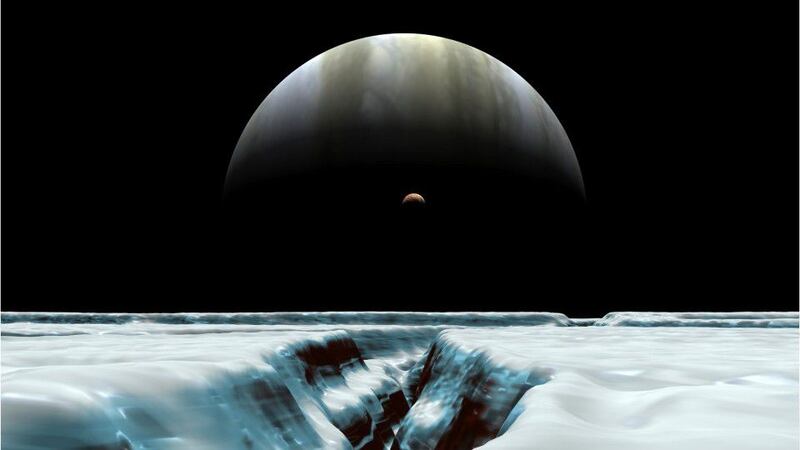Scientists said Thursday they have found evidence of water vapor in the atmosphere of one of Jupiter’s moons, NASA said.
In a news release, NASA said its Hubble Space Telescope observations of Europa, an icy moon that is 90% the size of Earth’s moon, revealed the presence of “persistent water vapor” in one of the satellite’s hemisphere.
The discovery confirms research in November 2019, when an international research team led by NASA announced they had detected water vapor for the first time above Europa’s surface.
Europa has a large ocean underneath its icy surface, NASA said in its release, adding that such conditions could be hospitable to sustain life. NASA added that Europa has a very smooth surface and the solid ice crust looks like cracked eggshell.
The Hubble telescope photographed plumes erupting through the ice in 2013, NASA said. The agency compared the plumes to geysers but said they extended more than 60 miles above the satellite’s surface.
The new results were gleaned from a new analysis of Hubble archival images and spectra, using a technique that recently resulted in the discovery of water vapor in the atmosphere of Ganymede, in another moon of Jupiter, by Lorenz Roth of the KTH Royal Institute of Technology, Space and Plasma Physics in Sweden.
“The observation of water vapor on Ganymede, and on the trailing side of Europa, advances our understanding of the atmospheres of icy moons,” Roth said in a statement. “However, the detection of a stable water abundance on Europa is a bit more surprising than on Ganymede because Europa’s surface temperatures are lower than Ganymede’s.”
©2021 Cox Media Group








